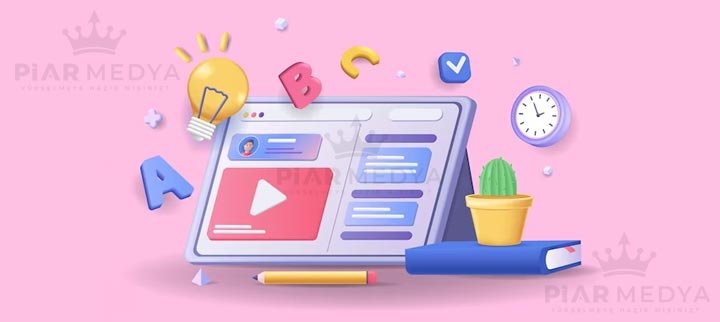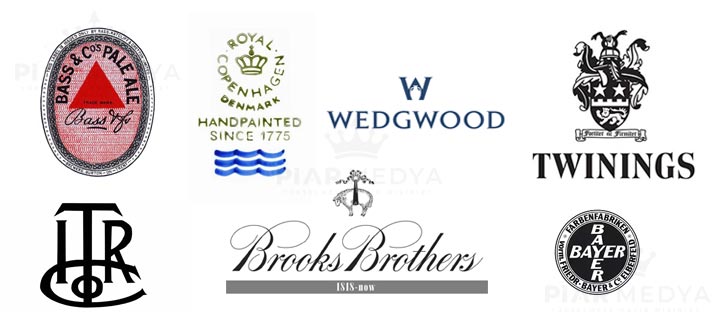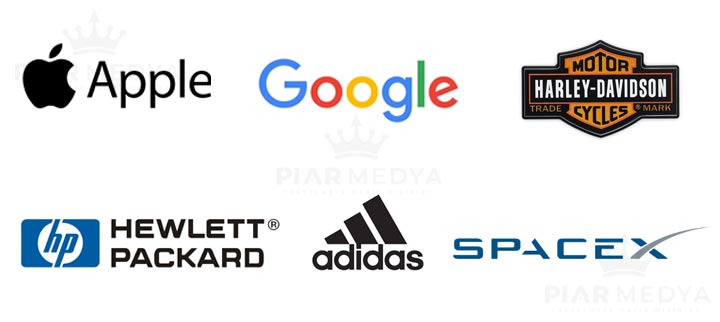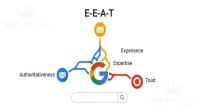What is Logo? How to Design a Logo (Step-by-Step Guide)
Logos are composed of text, color, shape, and illustrations. We have provided a detailed explanation of how logo design is done. You will find answers to all your questions related to topic What is Logo? How to Design a Logo (Step-by-Step Guide) in the continuation of the text.

What is a Logo?
History and Early Use of Logos
What is the Purpose of a Logo and What is it Used For?
What are Logotypes (Logos)?
What is an Emblem?
What Are the Differences Between a Logo and an Emblem?
The Relationship Between Logo and Typography
Common Uses of a Logo
What is Logo Design and What Does It Represent?
How is Logo Design Done?
1. Brand and Industry Research:
2. Brainstorming and Concept Development:
3. Creating Rough Sketches:
4. Transition to Digital:
5. Review and Revision:
6. Final Design and Implementation Guide:
Tips:
Key Elements to Consider When Creating a Logo
The Importance and Advantages of Logo Design for Brands
In Summary
What is a Logo?
A logo is a graphic symbol that represents the identity and values of a company, brand, or organization. Logos often consist of a unique design that reflects an organization's name, purpose, values, and style. A logo provides quick and effective information to customers, competitors, and the target audience about a business or product.
History and Early Use of Logos
The history of logo design dates back as far as human civilization itself. The first "logos" emerged as symbols and signs in ancient civilizations. These symbols often represented a king, a tribe, or a craftsman's trade. For example, Egyptian hieroglyphs or the signs used by craftsmen in the Middle Ages can be considered precursors to modern logos.
The modern use of logos in the sense we understand today began in the late 19th century with the rise of the industrial revolution and branding. During this period, companies and manufacturers started developing unique marks and logos to distinguish their products and services in the market. Some brands are recognized by the logos they have used throughout their history:
- Bass Ale: Established in 1777 in England, Bass Ale is one of the oldest commercial brands in the world. Their famous logo known as the "Bass Triangle" was introduced in the 19th century.
- Royal Copenhagen (Denmark): Founded in 1775, Royal Copenhagen is known for its high-quality porcelain production.
- Wedgwood: Established in 1759 in England, Wedgwood is renowned for its high-quality porcelain and ceramic products.
- Twinings: Twinings was founded in 1706 and boasts one of the world's oldest continuously used logos.
- Bayer (Germany): Founded in 1863 in Germany, Bayer is a company that produces pharmaceutical and health products. Bayer's logo features a simple and recognizable design that includes the company's name.
- Brooks Brothers (USA): Founded in 1818 in the United States, Brooks Brothers is one of America's oldest clothing brands. The brand's logo features a classic design with a golden sheep and lettering, symbolizing quality and elegance.
- IBM (International Business Machines): Established in 1911, IBM is a pioneering company in the field of computers and technology. IBM's current logo, introduced in 1972, consists of a blue lettering made up of eight stripes.

Because these brands have continually existed throughout history, they have used their logos to represent their brand identities.
What is the Purpose of a Logo and What is it Used For?
A logo is a crucial part of a brand's identity and communication strategy. It enhances brand recognition, instills confidence in customers, and fosters brand loyalty by reflecting the brand's identity. Therefore, logo design is an important step for a business or brand. The purpose of a logo is to fulfill the following important functions:
- Brand Recognition: A logo enhances the recognition of a brand or company. A well-designed logo sets the brand apart from its competitors and leaves a lasting impression in the minds of consumers.
- Creating Identity and Image: A logo reflects a brand's personality and image. A good logo instills confidence in customers by conveying the brand's values, style, and objectives.
- Brand Unification: A logo can be used as a unifying element among different products or services offered by a brand. It can promote various products or services using the same logo.
- Promotion and Marketing: A logo can be used in advertising campaigns, on websites, social media profiles, and other marketing materials. A well-designed logo is a powerful tool for promoting your brand's products or services.
- Professionalism and Trust: A good logo creates the impression that your company or brand is professional and trustworthy. Customers tend to have a more favorable view of brands they trust.
- Memorability: A simple, impactful, and recognizable logo easily leaves a lasting impression in consumers' minds. Customers remember the brand through the logo.
What are Logotypes (Logos)?
Logotypes, also known as logotypes, are graphic symbols that include a brand's name or title. Logotypes express a design that reflects the brand identity and emphasizes the brand's name. Logotypes are a subset of logos and have a textual weight because they clearly display the brand's name.
Logotype types vary based on design and expression. Here are the main types of logos:
- Symbolic or Iconic Logo: Uses a simple yet powerful graphic or icon to represent a brand. Example: Apple's bitten apple logo.
- Wordmark or Logotype: Depicts the brand's name in a customized font. Example: Google's colorful wordmark logo.
- Monogram or Lettermark: A logo type created using the initial letters of the brand's name. Example: Hewlett-Packard's "HP" logo.
- Emblem: Typically a logo type where text and symbols are combined, often with a traditional or classic appearance. Example: Harley-Davidson's "Bar & Shield" emblem.
- Abstract Logo: A logo type that expresses brand values using abstract geometric shapes. Example: Adidas' three stripes logo.
- Combination Mark: Logos that combine both a symbolic and wordmark element. Example: SpaceX, Elon Musk's space transportation company, has a combination mark logo. The SpaceX logo includes the SpaceX wordmark along with a circular star figure. The combination merges both the brand's name and a space-related symbol.

What is an Emblem?
An "emblem" is typically a visual symbol that represents the identity, values, or philosophy of an organization, group, or individual. Emblems are often designed to represent specific values, history, or cultural elements. They are commonly a significant part of an organization's or group's identity and are used in promotional materials, products, official documents, and other communication tools.
Emblems can be rich in design and meaning, sometimes incorporating complex visual elements and colors. These symbols often reflect the values, history, and goals of the organization or group they represent, providing both recognizability and depth of meaning.
What Are the Differences Between a Logo and an Emblem?
An "emblem" is typically a visual symbol that represents the identity of an organization, group, or individual and may carry a specific meaning or message. Emblems often contain abstract or symbolic elements and may represent a particular value, historical reference, or cultural element. Examples include national flags, sports club crests, or company logos.
A "logotype," on the other hand, can be defined as the customized font-based representation of a brand's or company's name. Logotypes generally feature the brand's name in a readable form and play a key role in brand identification.
The main differences between an emblem and a logotype include:
- Visual Content: Emblems often contain more complex and symbolic visual elements, whereas logotypes prominently display the brand's name in a specific font.
- Meaning and Symbolism: Emblems may carry deeper meanings or historical references, while logotypes primarily emphasize the brand's name and style.
- Use Cases: Emblems are often used to symbolize corporate identity, cultural values, or group affiliation, while logotypes are primarily used for commercial branding and promotion.
- Design Approach: Emblems may have a more artistic and metaphorical approach to design, while logotypes typically focus on simplicity and readability.
In summary, emblem and logotype represent different ways of expressing the identity of a brand or organization. Emblems are more often symbolic and carry deeper meanings, while logotypes directly showcase the brand's name and style.
The Relationship Between Logo and Typography
Logo and typography are essential components of brand identity and visual communication design, and they are closely related to each other. While a logo serves as a recognizable symbol of a brand, typography encompasses the typefaces and layout that support this visual identity.
The typography used within a logo plays a significant role in conveying the brand's message and character, contributing to the overall cohesion of the logo design. For an effective brand identity, it is crucial for the logo and typography to be harmonious and complementary. This harmony helps the brand project a professional and consistent image.
Common Uses of a Logo
A logo is used across a wide range of applications and can be seen in various fields. Here are common uses of a logo:
- Corporate Identity: Companies prominently feature their logos when establishing their corporate identities. The logo appears on all official documents, business cards, letterheads, and corporate identity materials.
- Digital Media: Websites, social media profiles, email signatures, and digital advertisements are common digital platforms where logos are used extensively.
- Product Packaging: The logo on product packaging helps consumers recognize and remember the brand. Packaging design is a significant factor in shaping the perception of the brand.
- Advertising and Marketing Materials: Brochures, posters, billboards, television, and radio advertisements are traditional marketing tools where logos are prominently used.
- Corporate Tools and Attire: Company vehicles, employee uniforms, workwear, and promotional items (such as pens, keychains, hats, etc.) are other areas where logos are used.
- Events and Sponsorships: During trade shows, conferences, sports events, and cultural gatherings, logos of sponsor companies are displayed to reach a wide audience.
- Software and Applications: Mobile applications, computer programs, and other digital tools strengthen brand awareness through logo use in user interfaces.
- Store and Office Design: The logo is an essential element in the design of physical stores, showrooms, and offices, influencing the overall customer experience.
What is Logo Design and What Does It Represent?
Logo design visually represents the identity, values, and philosophy of a brand or company. A logo is designed as a symbol or combination of typography that represents the character of the company or product, its target audience, and its industry.
Logo design can be considered a subset of graphic design, and both play complementary roles in creating a brand's visual identity and strengthening its communication strategy.
How is Logo Design Done?
Logo design is a crucial process that reflects a brand's identity and often creates the first impression. To create an effective logo design, there are steps to follow and points to consider. Here is the logo design process, step by step and in detail:
1. Brand and Industry Research:
First, you need to understand what the brand represents for the logo you are designing. To do this:
- Understand the Brand's Story: What is the brand's mission, vision, and values?
- Identify the Target Audience: Who is the brand's target customer base?
- Study Competitors: Analyze logos of other brands in the industry. This will help you create a unique logo.
2. Brainstorming and Concept Development:
In this stage, you should generate creative ideas:
- Brainstorm: Think about words, images, and concepts related to the brand.
- Define Key Words: Select key words that represent the essence of the brand.
- Seek Inspiration: You can find inspiration in artworks, nature, architecture, and other logos. However, avoid direct copying.
3. Creating Rough Sketches:
Now it's time to put pen to paper:
- Freehand Drawing: Put your initial ideas on paper. Your first attempts do not have to be perfect.
- Experiment with Different Designs: Try different shapes, fonts, and layouts.
4. Transition to Digital:
If you are satisfied with your sketches, transition them to a digital format:
- Use Vector-Based Software: Use a program like Adobe Illustrator to digitize your designs.
- Select Colors and Fonts: Choose colors and readable, impactful fonts that reflect the brand's personality.
5. Review and Revision:
Critically evaluate your design:
- Seek Feedback: Get feedback from others, especially the target audience.
- Make Revisions: Make changes to your design as needed to improve it.
6. Final Design and Implementation Guide:
Complete your final steps:
- Perform Final Checks: Ensure that colors and fonts are correct.
- Save in Different Formats: Save your logo in various formats (PNG, JPG, SVG).
- Create a Logo Usage Guide: Prepare a guide that specifies how the logo should be used.
Tips:
- Keep It Simple and Clear: Your logo should not be overly complex; it should be easily understandable and memorable.
- Provide Flexibility: Your logo should look good in different sizes and mediums.
- Create a Timeless Design: Avoid chasing trends; aim for a design with lasting appeal.
The logo design process requires creative thinking, meticulous planning, and attention to detail. Keeping the essence and goals of the brand in mind at every step is the key to a successful logo design. Working with a professional advertising agency can make this process more efficient and effective.
Key Elements to Consider When Creating a Logo
Logo design is a critical process that reflects a brand's identity and should be approached with care. Here are the key elements to consider when creating a logo:
Simplicity:
- Simple logos are easier to remember and recognize.
- Complex and overly detailed designs can be overwhelming and overshadow the main message.
Originality:
- Your logo should not resemble those of competing companies.
- It's important that your logo has unique features that set your brand apart.
Versatility and Applicability:
- Your logo should look good in different sizes, colors, and mediums (digital, print, on products, etc.).
- It should be clear and legible everywhere, from a small mobile screen to a large billboard.
Timeless Design:
- Instead of following temporary trends, create a design that will stand the test of time.
- Your logo should be adaptable to your brand's growth and evolution.
Use of Color:
- Colors have different meanings and evoke emotional responses.
- The colors chosen should reflect your brand's character and industry.
Typography:
- Font selection affects the readability of your logo.
- The chosen typeface should be in harmony with your brand's overall style and feel.
Symbolism and Meaning:
- The elements in your logo should reflect your brand's values and philosophy.
- Pay attention to the meanings of symbols and colors in different cultures.
Feedback and Testing:
- Gather feedback by showing your logo to potential customers and impartial observers.
- Test how your logo performs in various usage scenarios.
Legal Considerations:
- Ensure that your logo is unique and not subject to copyright issues.
The Importance and Advantages of Logo Design for Brands
Logo design is strategically important for a brand, going beyond being just a visual symbol. Well-designed logos strengthen a brand's identity and offer various advantages:
Creating Brand Identity:
- A logo forms the core of a brand's visual identity, enabling consumers to recognize the brand.
- It shapes the first impression of a brand and influences how consumers perceive it.
Increasing Brand Awareness:
- A simple and memorable logo makes it easier for a brand to be recognized.
- By using the logo across different platforms and materials (e.g., social media, advertising, packaging), brand awareness is enhanced.
Professionalism and Trustworthiness:
- A high-quality and professional logo design conveys that the brand is trustworthy and serious.
- Consumers are more likely to trust brands with a professional appearance.
Market Positioning:
- A logo reflects a brand's position and value in the market.
- A logo can be specially designed to connect with the target audience.
Competitive Advantage:
- An original logo helps a brand stand out from competitors offering similar products or services.
- A strong brand identity encourages customer loyalty.
Long-Term Value:
- A well-designed logo can remain relevant and add value to a brand for many years.
- The logo can adapt to the brand's evolution and remain open to developments.
Corporate Culture and Unity:
- Employees identify more with a strong brand identity, which boosts motivation.
- A logo reflecting the company's mission and values fosters a sense of unity and belonging among employees.
Effective Communication:
- A logo can effectively convey a brand's message and values through visual language.
- It also reflects the brand's commitment to user-friendly products and accessible technology for all.
In short, logo design plays a critical role in the success of a brand and significantly impacts the brand's interaction with its target audience, market positioning, and overall image.
In Summary
In summary, a logo is an essential part of a brand's visual identity and can be used as a strategic marketing tool. Typically, a logo with a simple, memorable, and recognizable design creates the initial impression of a business or brand and serves as its visual representative in public relations. When designing a logo, the brand's values, target audience, and industry positioning should be taken into account.
A well-designed logo reflects the brand's trustworthiness and quality, facilitates better connection with the target audience, and encourages brand loyalty in the long run.
FREQUENTLY ASKED QUESTIONS (FAQs)
It increases brand recognition and visually represents the brand identity.
A brand represents the overall image and reputation, while a logo is the visual representation of that brand.
No, an emblem is usually more symbolic and meaningful, whereas a logo reflects the name and style of the brand.
A logo is a visual symbol, while a slogan is a written expression that conveys the brand`s message.
The placement of the logo varies depending on context and design; there is no strict rule.
It consists of a visual icon and typography.
Symbolic, typographic, monogram, emblem, abstract.
Here are some popular logo design programs that you can use for logo design: Adobe Illustrator, CorelDRAW, Inkscape.
It pertains to the legal rights and licenses for the use of a logo.
Through research, brand analysis, creative design, revisions, and the use of professional tools.
Logo design is typically done by graphic design agencies, advertising agencies, and graphic designers.
It should be simple, memorable, reflective of the brand`s values, and suitable for versatile use.
It consists of a visual symbol and typography.
The placement of the logo depends on the context and design; there is no strict rule.
It should be composed of colors that reflect the brand`s identity and industry.
On websites, product packaging, business cards, marketing materials, and more.






